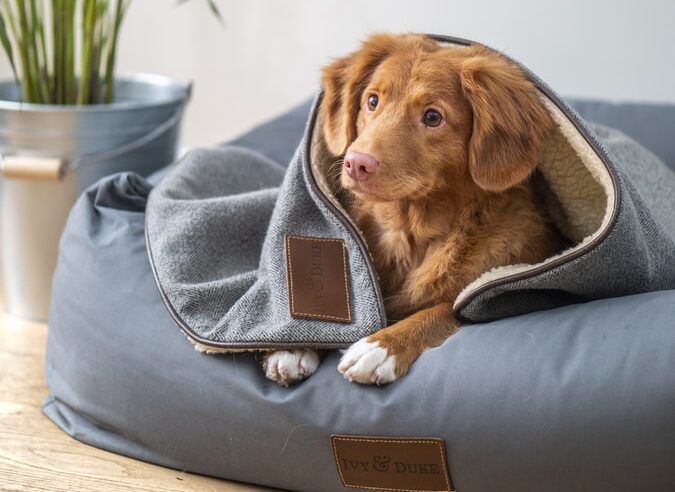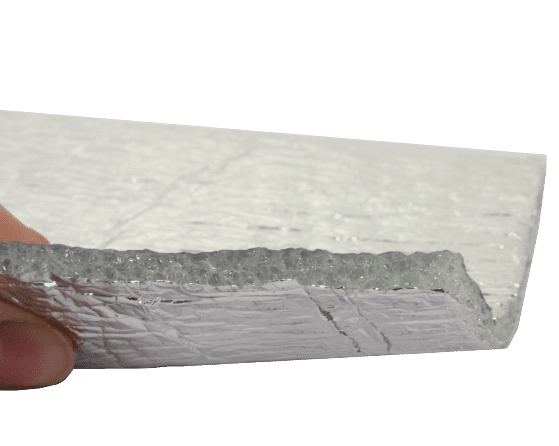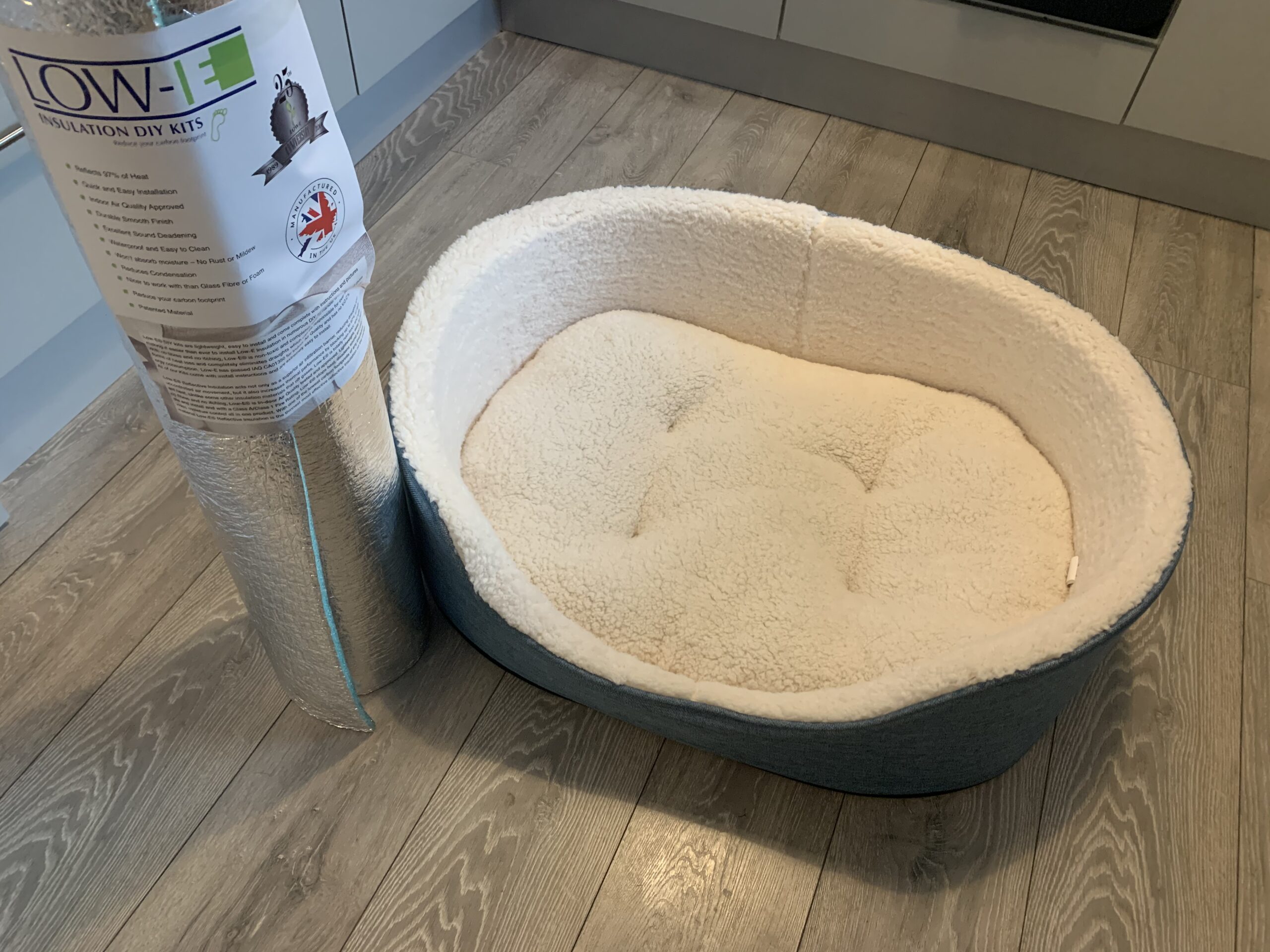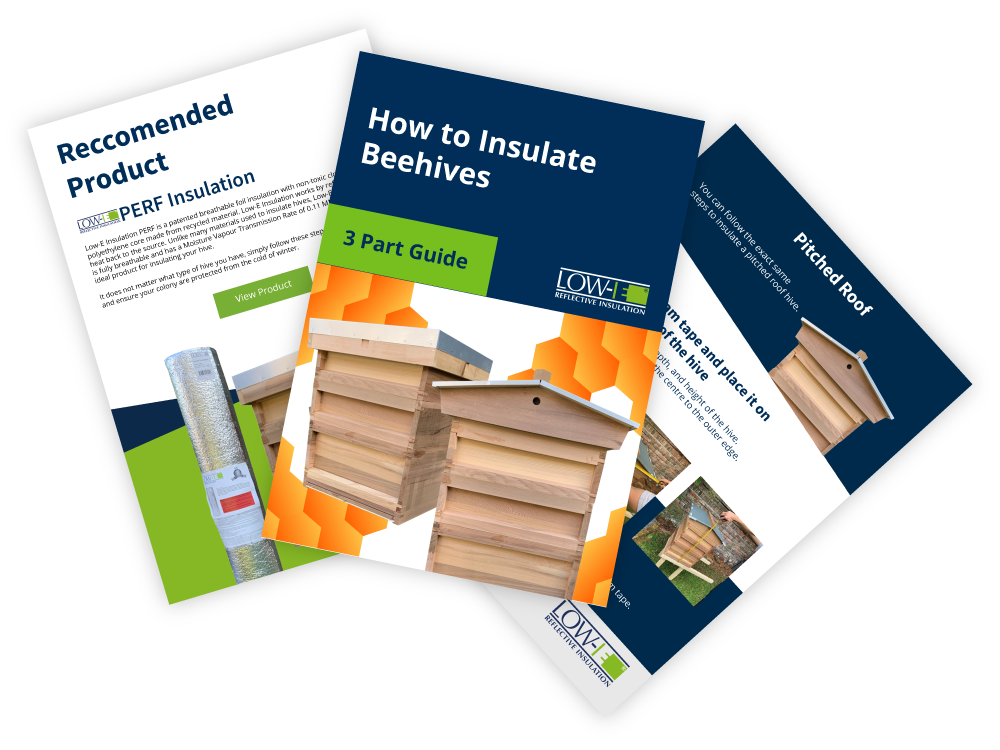How to Insulate a Pet Bed
We have put this blog together to give a better understanding of how and why you should insulate a pet bed. It can be easy to overlook the cold of laminated or tiled floors from the comfort of our sofas and beds during the colder months, but for our pets it can be uncomfortable and potentially detrimental to their health.
There are plenty of ways to insulate a pet bed, crate, kennel, box or carry bag but the materials can often be hard to cut and heavy. Most of the time they are absorbent, hard to clean and can become smelly over time.
The number one thing you need to remember is, that heat will always dissipate to a colder place. The ground your pet is sleeping on is so vast and so cold that your pets body is constantly trying to produce heat just to offset the heat that is being drawn away from them into the floor. If you’ve slept on floor or gone camping without a sleeping mat you may have some idea what it feels like.
If you want to read more about heat transfer and how foil insulation works you can check out our other blog opposite.
Why insulate my pets’ bed?
During the colder months of the year we tend to wrap up more often and turn up the heating to make ourselves more comfortable of a morning or evening whilst at home. For us this is usually fine, we have our extra layers on, and we are sat up on our sofas or on our beds, raised off the ground. Our pets however may not feel quite as comfortable as they don’t have thick socks and slippers and they’re often on laminated or tiled floors which tend to remain very cold (if you don’t have underfloor heating) even with the heating on high!
The thing you need to remember is, that heat will always dissipate to a colder place. Floors are so vast and so cold that they your pets body is constantly trying to produce heat just to off set the heat that is being drawn away from them into the floor.
Try lying on your floor at home one evening and you will get a clearer idea of where your pets are living. Warm air rises and leaves heavier cold air at floor level and during the night as temperatures drop our pets become susceptible to sickness whilst exposed to constant cold.
Won’t my pet bed protect from the cold floor?
Many of our pet’s homes are completely uninsulated such as hutches or cages and are often kept on the ground. However, even thick beds for cats and dogs are designed to be comfy but they are not designed specifically to insulate.
Like the pillows in our beds, over time the quality of pet pads is affected by the way weight is distributed. Pets tend to sleep central in their beds and soon enough the stuffing in pet beds pushes out to the edges and the centre, where they sleep, becomes thinner and more vulnerable to the cold floors.
Eventually there may only be a few thin pieces of material between them and the cold floor.
What about outdoor pets?
Many pets are comfortable outside down to a certain temperature (some larger dogs are comfortable to about 8°C for example) however many older, short-haired or smaller animals may find the cold difficult so insulating hutches and outdoor houses can greatly increase comfort for them. Insulation can also reduce draughts and help to manage moisture, further protecting the wellbeing of your pets.
What type of insulation should I use for my pet bed?
There are a few types of insulation that can be used for pet beds, cages, hutches etc however not all are ideal. Let’s go through a few of the more common options and their drawbacks.
Carpet for Insulation
Carpet isn’t cheap; however, you won’t really need a lot of it to insulate pet beds but anything that isn’t a long-fibred carpet is unlikely to insulate particularly well. Most importantly, carpets can so hang on to moisture and smells so it would need cleaning regularly!
Fibreglass Insulation
Fibreglass is a very common insulation material and is used a lot in loft insulation. It’s cheap and easy to install however it is notoriously irritating to the skin and can release airborne fibres which reduce air quality. This may be suitable if you were building a double-walled hutch and could fill the space however it wont work for stuffing dog beds or anywhere pets could have direct contact.
Foam Insulation
Styrofoam can be cut to shape easily and will fit comfortably into the walls of a hutch or dog house or even as a mat beneath beds. The main issue with using Styrofoam is that it’s not particularly durable and wont last too long if its exposed, many pets may also chew on it!
Reflective Foil Insulation
Probably the best materials to use for pet beds/houses are proper reflective insulations as they’re affordable, very easy to install and have few drawbacks.
Low-E Insulation and has no harmful fibres and does not off gas. It is hypoallergenic and resistant to the grown of fungi. So you won’t get any nesting or burrowing environments that you can get with wool insulations.
Low-E Insulation is very thin made from 99.4% pure aluminium. It works by reflecting heat back to the source. That means, you best friend will expel less energy trying to keep warm and can relax and sleep more comfortably.
Remember don’t wrap people in duvets when they are suffering from exposure to cold, they wrap them in foil blankets.
How do I insulate my pet bed?
There are many ways to insulate your pet bed, crate, kennel or carrier. Whether it be an indoor bed for cats or dogs or an outdoor dog house or hutch. However, I would not like to use anything other than Low-E Reflective foil insulation as my main concern is the wellbeing of my pets and there are too many negatives to the other options. I opted for Low-E Insulation as it ticked all the boxes for my needs (easy to use, safe, affordable) and both myself and my dog have been very happy with the results.
You can see a Step-by-Step install guide here






Recent Comments